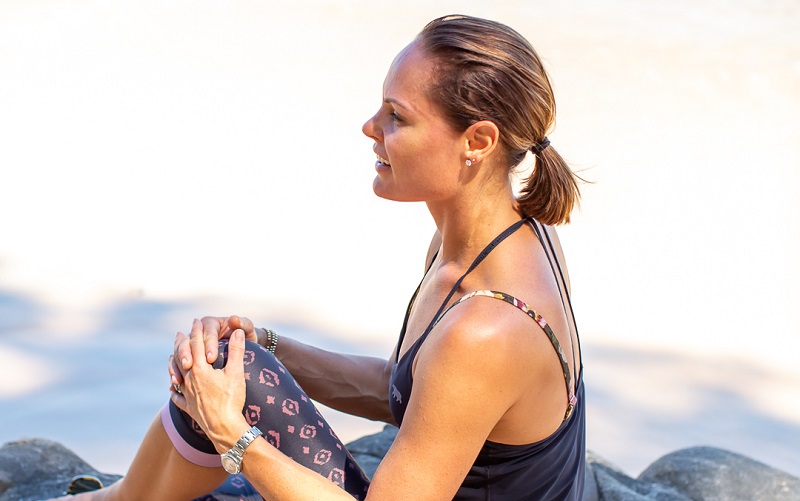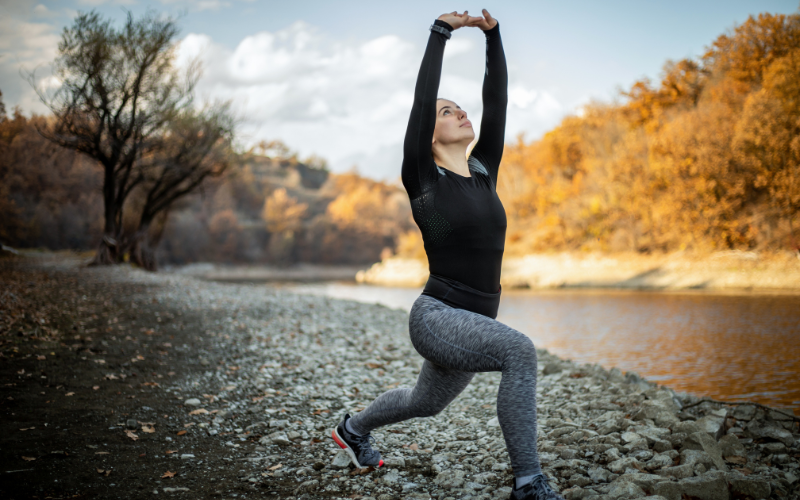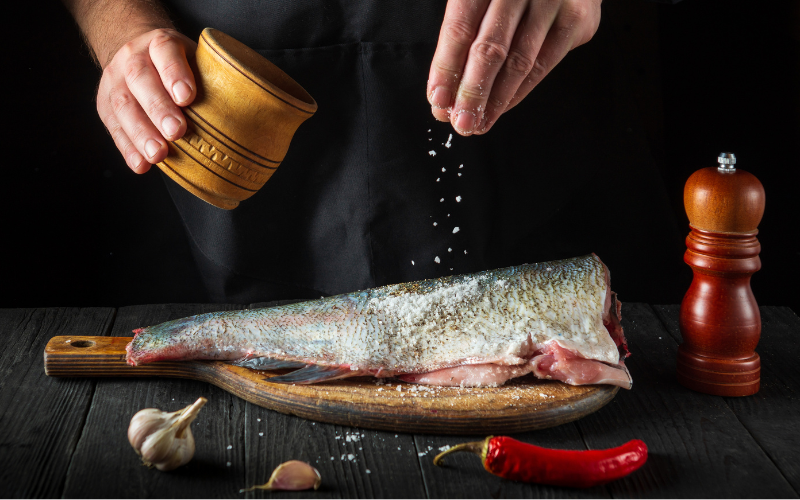Zoe Bingley-Pullin: Why most people fail at meditation. And why that’s perfectly ok!

If you’re like most people, you’ve heard of meditation and you probably think it’s a good thing to do. But you may be grappling with these typical obstacles – thinking it’s too hard, you’re not the type for it, you don’t know how to do it or you don’t have the time to master it. Did your previous attempts leave you feeling that it didn’t work or you didn’t see the point?
If you’re a bona fide meditation flop, this article is for you. I’ll take you through the powerful benefits you can experience when you give meditation a try, provide ideas on how to get started, plus star tips from the pros. Lastly, I’ll give you my own recorded sample to help get you on your way. My aim is to show you why failure is just a stepping stone to meditation success.
Why you can’t fail at meditation
Meditation is a habitual process of training your mind to focus and redirect your thoughts. According to Buddhism, meditation is about teaching the mind not to dwell in the past or contemplate the future, but to enjoy the beauty of the present.
The reason you can’t fail at meditation is that it’s a personal experience. There is no right way or wrong way to meditate. It’s simply a state of calm awareness that you can achieve for yourself with a little practice. Meditation is not hard, anyone can do it. It just takes some discipline.
Proven scientific benefits of meditation
Before we launch into how to do it, here are the benefits of meditation that are backed by science.
- Reduces your stress. Those who practice meditation have lower cortisol levels and stress-induced inflammation.
- Improves concentration. People who regularly meditate were shown to have better focus and attention spans. This translates into sharper problem-solving and decision-making so it can be a real positive for your professional career.
- Promotes sleep. Once you get the hang of meditation, you will be better at controlling runaway thoughts that can lead to insomnia. This, in combination with an ability to feel more relaxed means meditators fall asleep faster and stay asleep longer.
- Controls pain. Research using MRI technology has shown that those practiced in the art of meditation have a better ability to cope with pain and reduced sensation to pain, than those without any meditation training.
- Reduces blood pressure. Meditation improves heart health by relaxing the nerve signals that cause tension in blood vessels as well as mitigating stressful situations.
- Combats anxiety + depression. Regular meditation can lessen the symptoms of anxiety and related mental health issues like social unease, phobias and obsessive-compulsive behaviours. Long term studies have also shown that those who meditate lower their chances of depression. In fact, one study showed that meditation was equally effective as antidepressant medications when it came to treating depression.
- Improves mental wellbeing. Meditating can heighten feelings of optimism, improve self-image and help regulate emotions. Meditation has also been shown to strengthen the areas of the brain that are involved in learning and memory. In older age groups, those who meditate have been shown to have more grey matter than those who don’t.
- Increases compassion. Metta meditation is a practice that particularly focuses on loving, kindness and positive feelings towards oneself and others. The result is empathy and more social connectedness. This type of meditation can also help reduce marital conflict and anger management.
Meditation is not a panacea, but there’s undoubtedly plenty of evidence of ‘good vibes’ in those who practice it regularly.
Ways to meditate
As I said earlier, there is no correct way to do meditation. You may need to try a few different approaches before you land on one that feels right for you. Here are a few meditation techniques you can try to get you started (one at a time, not all of them together!)
- Be quiet, close your eyes, listen to what’s around you. Do you hear birds outside, the neighbours car door slamming, a truck in the distance? Just move your mind to focus on each new thing you hear and then let it drop away from your thoughts. If there’s no sounds then focus on the silence.
- Focus your mind only on your breath. Breathe deeply and slowing. Feel the air going into your nostrils and then out again. Focus on the temperature, the speed and the sensations around your breath moving in and out of you. Feel the expansion and contraction of your ribcage. Let other thoughts drift away and keep coming back to your breathing.
- Mentally scan down your body, from head to toe. As you scan, notice which parts feel relaxed or tense, heavy or light, any soreness or pain. Build a picture of how the body feels, in the moment. If thoughts arise, simply return to your body scan, over and again.
- Light a candle and gaze into the flame (safely and from a distance). Focus on the flickering light and the changes made by the flame. As things float into your consciousness, gently dismiss them and bring your attention back to the flame.
- Visualise a scene, usually one based in nature. For example, walking in a rainforest, swimming in the ocean, floating in the clouds. Be creative. Think about the sounds, smells and feelings that would surround you. Try to rid your mind of any distracting thoughts to come back to your visualisation.
- Play a sound, a relaxing song or white noise in the background and draw all your attention to that sound. Exclude your other thoughts as much as you can to reconnect just with that one background track.
- Try an app for guided meditations. Personally I use Insight Timer but there are plenty of others out there. You can also try a class if you feel your home or work environment isn’t conducive to meditating. I've even included a sample meditation here for you (recorded by yours truly) so you can try it out...
Tips to improve your meditation technique + avert failure
Here are a few star tips from the professionals. This advice has really helped me to get more from my meditation practice and I hope it will help you too.
Before you start. Be clear about what you want to get out of your sessions, for example, to feel happier, calmer, be less reactive, more focused, less stressed. Knowing what you want assists with creating the right attitude and to maintain your commitment to keep trying.
Don’t rush. You really need to dedicate time to meditating every day and know that this is special time set aside for yourself. If you already feel stressed and are trying squeeze it in between other stuff, you may not get any benefit.
When? Many people say that meditation is best done first thing in the morning, as it can boost endorphins (better than coffee they say!), prevent stress all day and set you up with good eating habits too. Night time meditation can be very helpful for getting you off to a good sleep. Anytime that suits you is a good time for meditation.
How long? As a beginner you may only be able to sit still for a few minutes and that’s fine. Aim for between 15 minutes and 20 minutes each day.
Expectations. You should expect your mind to feel busy, easily distracted and restless. You won’t suddenly gain uninterrupted calm, just because you’ve decided to meditate! Understand that some days you will feel like you nailed your meditation time and other days you won’t.
Journey. You don’t have to achieve anything. There’s no destination with meditation, it really is all about the journey. As long as you finish with a calm feeling, then you can count that as success.
Afterwards. Try not to lose the calm quality you created in your meditation, but carry that awareness with you when you move on with your day.
Consistency. Often we start something new with enthusiasm – exercise, diet, hobby – but the novelty can then wear off. With meditation you want to train your mind to relate to your thoughts differently, and this takes time and discipline.
Meditation doesn’t promise to solve your problems, and there’s no guarantee of everlasting happiness. But it can help you get things in perspective, think more clearly and feel calmer to tackle the many things that life throws your way. I truly hope that this little guide can move towards a more rewarding and successful meditation practice. Good luck.











